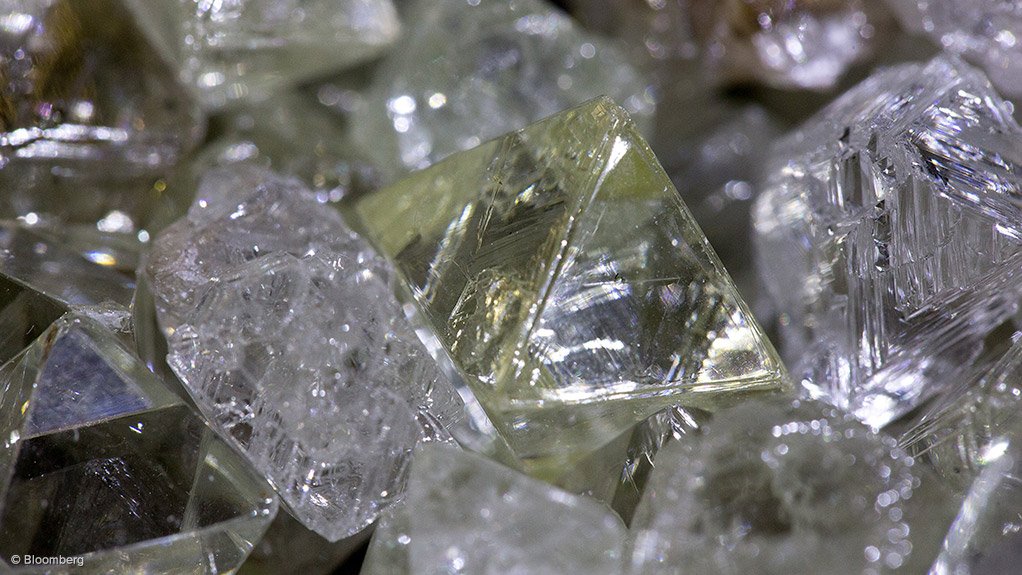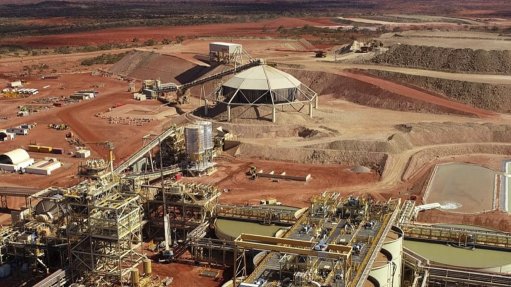Diamond miners show potential as 4 declare dividends in last year
Diamond miners were finally showing their potential, with 80% of independent diamond miners having declared their first-ever dividend within the last 12 months, independent industry analyst and consultant Paul Zimnisky said last week.
That meant that four out of five pure-play publicly traded diamond producers with market capitalisations of at least $250-million were profitable.
“Despite a weaker diamond price in recent months, owing to tightened industry credit availability, a strong dollar and the slowing of growth in Chinese luxury consumption, diamond miners have remained profitable,” Zimnisky stated in a published report.
Russian diamond major Alrosa was the only unprofitable company globally, owing to a foreign exchange hit it took in 2014 on debt borrowed in US dollars. The $1.3-billion loss came in the second half of the year as the ruble retreated to record lows against the dollar.
With miners concurrently implementing dividend programmes across the industry, it could be seen as a fundamental shift in the industry’s attractiveness to investors, an industry that some would say had a reputation of failing to generate shareholder value.
The diamond mining business was notoriously challenging, given the high execution risk and its capital-intensive nature, Zimnisky warned.
In recent years, the industry had benefited from improved operating efficiencies that led to more consistent cash flow generation. Most of the companies in the space were relatively new operators, having only started production within the last decade in the years following De Beers’ restructuring.
Experience gained by the new miners over that time had resulted in improved output and recovery techniques.
A stronger dollar had also benefited miners operating in Africa, Canada and Russia, where labour and other operating costs paid in local currencies had become less expensive relative to the price of diamonds sold by the companies in US dollars.
Zimnisky noted that, while improved operating economics had provided the companies with the means necessary to return cash to shareholders, the advent of dividend programmes was in part due to a fundamental shift that had taken place in the mining industry as a whole (not just in those producing diamonds), geared more towards returning cash to investors than accumulating resource inventory.
In the second half of the last decade, in the midst of the commodity ‘supercycle,’ the global investment community incentivised mining executives to accumulate and hoard reserves – even through expensive acquisition – as investors valued mining companies on resources and reserves held in the ground and not so much on production cash flow and profitability.
The analyst noted that the global financial crisis had rendered many of these expensively acquired reserves uneconomic, which led to record-setting write-downs in the mining industry over the last six years.
“Global investors have since started valuing mining companies using more traditional profitability metrics, putting pressure on mining executives to shift focus to production efficiencies and cash flow generation,” Zimnisky pointed out.
In June last year, Canadian-listed Lucara Diamond Corp was the first standalone diamond miner to start a dividend programme, which yielded 1.7% at the time, or 3.5%, including the ‘exceptional diamond’ special dividend that was also paid.
Since then, Dominion Diamond, Gem Diamonds and Petra Diamonds had all announced dividend programmes. Alrosa was paying a dividend before going public in October 2013 and continued to do so despite the exchange rate loss realised in 2014.
De Beers, a subsidiary of larger diversified miner Anglo American, was not included as one of the standalone diamond miners; however, De Beers’ recent performance relative to Anglo’s other divisions was consistent with the rest of the players in the space.
Comments
Press Office
Announcements
What's On
Subscribe to improve your user experience...
Option 1 (equivalent of R125 a month):
Receive a weekly copy of Creamer Media's Engineering News & Mining Weekly magazine
(print copy for those in South Africa and e-magazine for those outside of South Africa)
Receive daily email newsletters
Access to full search results
Access archive of magazine back copies
Access to Projects in Progress
Access to ONE Research Report of your choice in PDF format
Option 2 (equivalent of R375 a month):
All benefits from Option 1
PLUS
Access to Creamer Media's Research Channel Africa for ALL Research Reports, in PDF format, on various industrial and mining sectors
including Electricity; Water; Energy Transition; Hydrogen; Roads, Rail and Ports; Coal; Gold; Platinum; Battery Metals; etc.
Already a subscriber?
Forgotten your password?
Receive weekly copy of Creamer Media's Engineering News & Mining Weekly magazine (print copy for those in South Africa and e-magazine for those outside of South Africa)
➕
Recieve daily email newsletters
➕
Access to full search results
➕
Access archive of magazine back copies
➕
Access to Projects in Progress
➕
Access to ONE Research Report of your choice in PDF format
RESEARCH CHANNEL AFRICA
R4500 (equivalent of R375 a month)
SUBSCRIBEAll benefits from Option 1
➕
Access to Creamer Media's Research Channel Africa for ALL Research Reports on various industrial and mining sectors, in PDF format, including on:
Electricity
➕
Water
➕
Energy Transition
➕
Hydrogen
➕
Roads, Rail and Ports
➕
Coal
➕
Gold
➕
Platinum
➕
Battery Metals
➕
etc.
Receive all benefits from Option 1 or Option 2 delivered to numerous people at your company
➕
Multiple User names and Passwords for simultaneous log-ins
➕
Intranet integration access to all in your organisation





















